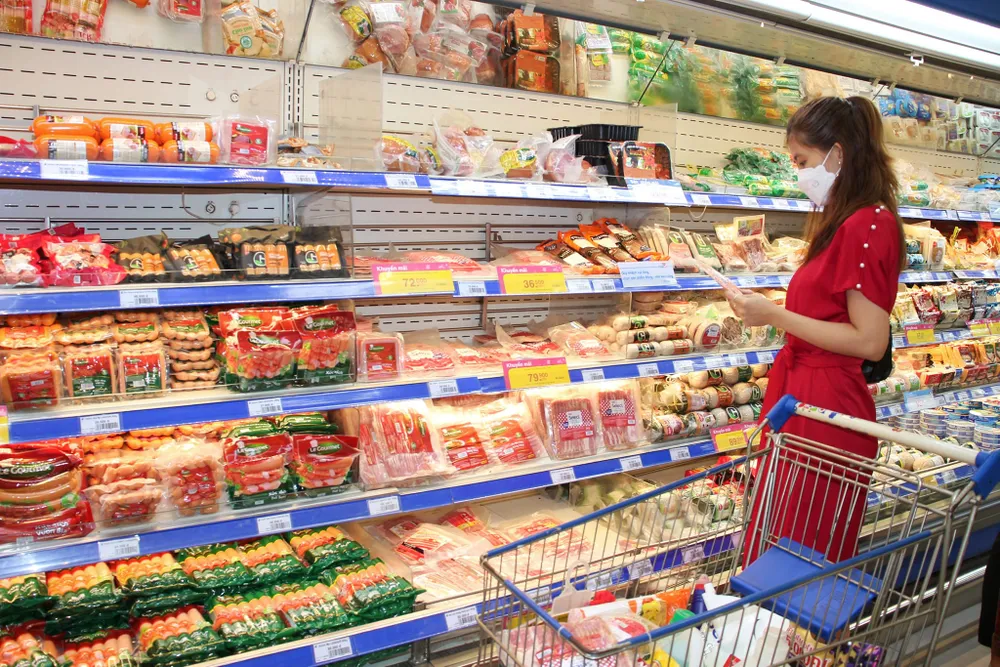
The application of Fintech services by retailers is providing better quality services for consumers. However, it is still not being understood why the traditional channel continues to dominate 85% of the entire retail industry in the country.
Traditional methods
The current reality is that the traditional retailing forms of channels of individual business households continues to dominate the markets in Vietnam. Even with the explosive growth of modern retail channels in recent years, the market share of traditional retail channels still accounts for 85% across the country. Currently in Vietnam, there are about 4,000 convenience stores, about 300 supermarkets and hypermarkets, while the number of traditional retail and grocery stores are around 1.5 million.
Almost 80% of well-established brands in Vietnam are valued at about USD 220 bln. These are being distributed through indirect channels, which means they are unable to communicate directly or access online sales data to retailers and end users, which are the consumers. This covers about 1.5 million traditional retail outlets that do not have access to consistent price data, incentive programs offered by brands, or working capital to support businesses. Even modern and convenient payment channels or means are not yet equipped with digitalized systems for Fintech services for a majority of consumers across the country.
Despite the strong development of the banking industry and the cashless trend now taking over all parts of Vietnam, almost 70% of the Vietnamese people still do not have a bank account or do not have access to essential banking services. One of the reasons is that the distribution of bank branches per capita in Vietnam is much more sparse than in other countries. In Vietnam, the current coverage is 3.9 bank branches per 100,000 people, while in Thailand the corresponding figure is 11.7, in Malaysia 10.2, in Indonesia 16.2, and in Japan 34. Many bank branches of Vietnamese banks are mainly concentrated in the bigger cities and main towns of provinces.
It is clear that there is a need for a diverse, more specialized, and reliable technology to help accelerate the pace of digitalization in the retail industry, especially in traditional retail outlets, along with the application of Fintech services to reach more consumers. In other words, the retail industry is in need of an extensive digital platform for the growth of a vibrant retail industry and a strong Business to Business (B2B) Fintech platform. Currently the Fintech market in Vietnam is mainly dominated by Fintech companies operating under the Business to Customer (B2C) model, leaving a lot of space and opportunities for the Business to Business to Customer (B2B & B2B2C) model.
Fintech Goals
In the last three to five years, many large enterprises have invested huge amounts in digitalizing the retail industry in Vietnam. This is actually a very good sign, although this has not yet had an impact on individual business householders, grocery owners, older people, or those less familiar with digital tech gadgets or the latest e-commerce trends. The reason is that especially in the traditional retail distribution industry in Vietnam, it is still largely dependent on distributors, wholesalers, and distribution outlets in various locations. Digital transformation in the present retail industry will face many obstacles if conflicting factors crop up with above parties or factors, and hence will not be supported and will face many obstacles when implemented.
In addition, diverse and convenient payment channels, especially suitable financial packages to support the businesses of retail entities in digital transformation, have not really been noticed and combined in a reasonable and effective way, so they are operating in isolation.
We are one of the leading Fintech companies in Vietnam established in 2016, with a unique B2B2C business model, focusing on serving retail points across the country. The Finviet Joint Stock Company has been participating and contributing to the digital transformation of the retail industry in Vietnam. Accordingly, Finviet builds and provides a diverse and in-depth technology ecosystem platform for all participants in the retail distribution chain under the Manufacturer to Consumer (M2C) model and combined with B2B & B2B2C Fintech services, to create clear benefits for all the parties.
The Finviet Joint Stock Company is currently one of the few Vietnamese Fintech businesses having a complete and comprehensive technology ecosystem with e-wallet services, unlimited connection for 4.0 technology distribution channel management system, and support of business capital for points of sale, eco-delivery, freight forwarding, 7ADS advertising OOH, 7PAY mobile payment gateway, and QRcode payment acceptance point.
Like many other Fintech businesses, the Finviet Joint Stock Company is looking to continuously receiving support from the State Bank of Vietnam, the Government, and various related departments and agencies to create favorable conditions for their business segments, and supporting the Fintech M2C, B2B2C business distribution channels in Vietnam. The Finviet Joint Stock Company can fully participate widely and promote the digital transformation of the economy in line with the policy of the Government, Party, and laws of the State, and also enhance competitiveness for the sustainable development in the country.




















